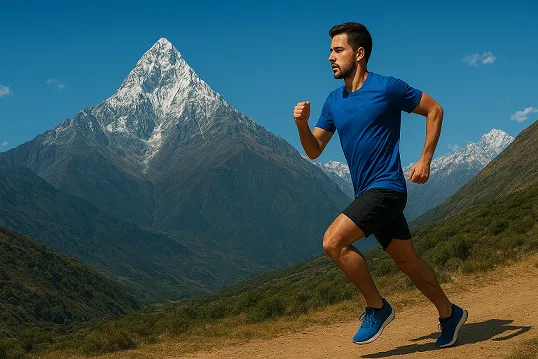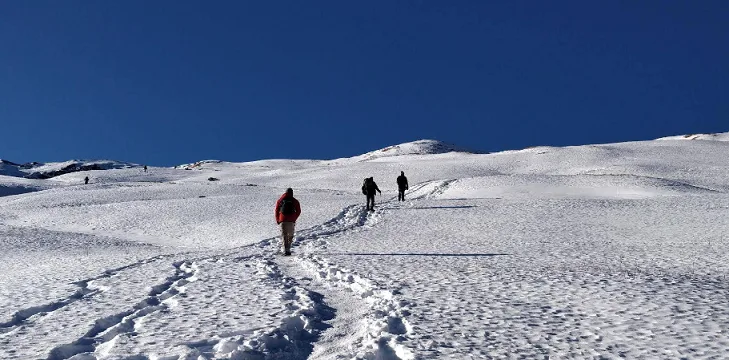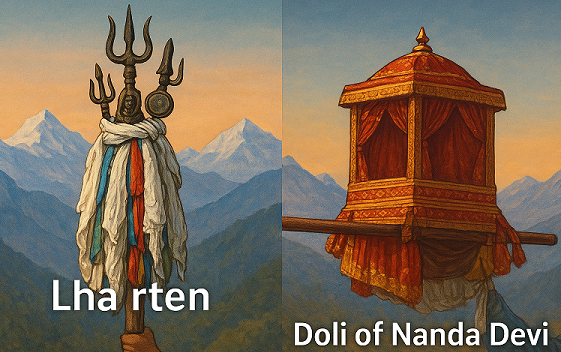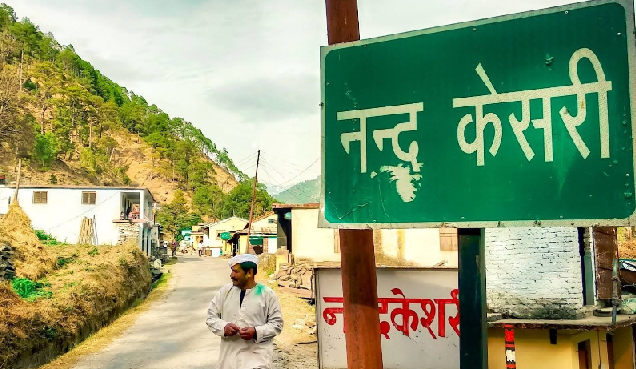Geography and Location
Darma Valley lies at an average altitude of 3,500 metres above sea level. The valley is formed by the Dhauliganga River, which originates from the Dawe glacier near the Sino-Indian border. The river flows through the valley and merges with the Kali River near Tawaghat.
Major villages in Darma Valley include:
Dantu
Darma
Nagling
Sela
Tiding
Baun
Marchha
These are traditional villages inhabited by the Rang tribe — one of the oldest Himalayan communities, known for their trade with Tibet and unique lifestyle.
History and Culture
Historically, Darma Valley was part of the ancient trans-Himalayan trade route with Tibet. The locals, mostly from the Rang and Shauka communities, were traders. They used to exchange goods like salt, wool, and barley with Tibetan merchants.
After the 1962 war between India and China, this border trade stopped, and many villagers migrated. But their rich culture, traditional wooden houses, and festivals like Bisu and Harela are still alive in the valley.
The Rang language, customs, food habits, and folk music reflect deep Himalayan and Tibetan influence.
How to Reach Darma Valley
Reaching Darma Valley is not easy, but it’s worth it.
By Road:
Delhi to Dharchula:
You can drive or take a bus/train to Tanakpur or Kathgodam, then proceed to Dharchula via Lohaghat and Didihat.
Distance from Delhi: ~500 km
From Dharchula, the road goes till Tawaghat, and from there to Sobla — the last motorable point for Darma Valley.Trek from Sobla:
From Sobla, a trek of 40–50 km takes you deep inside the valley. The trail passes through Dantu, Sela, Nagling, Baun, and Tiding. Porters or mules are available locally.
Permit Requirement:
As the region lies close to the India–China border, you need an Inner Line Permit (ILP). It is issued by the SDM office in Dharchula. Keep photocopies of your ID proof and passport-size photographs.
Best Time to Visit Darma Valley
The valley opens to visitors between May to October.
May – June: Best for greenery, blooming flowers, and pleasant weather.
July – August: Avoid due to heavy monsoon and landslides.
September – October: Clear skies and great views of snow peaks.
Winter months are harsh, and most villages become inaccessible due to snow.
Flora and Fauna
Darma Valley is rich in Himalayan biodiversity.
Flora:
Rhododendrons
Junipers
Birch
Alpine flowers
Medicinal herbs like Yarsagumba and Kutki
Fauna:
Himalayan Black Bear
Blue Sheep (Bharal)
Snow Leopard (rare)
Musk Deer
Himalayan Monal (state bird of Uttarakhand)
This area also falls under the Askot Wildlife Sanctuary, which is a hotspot for researchers.
Popular Treks Around Darma Valley
1. Darma Valley Trek
Main trek covering the valley’s villages. Ideal for cultural and nature exploration.
2. Panchachuli Base Camp Trek
Starts from Dantu village, leads to the base of Panchachuli peaks (5,000–6,000 m). Stunning views and glaciers.
3. Sinla Pass Trek
Connects Darma Valley to Kuthi Valley. Difficult route, used by shepherds and ancient traders.
4. Namik Glacier Trek
Another hidden trek route connecting Darma to Bageshwar side. Not very frequented.
All these treks require local guides and good physical fitness.
🏠 Accommodation in Darma Valley
Darma Valley is a remote Himalayan area, so don’t expect luxury hotels. However, there are comfortable and homely options available. Staying here is part of the experience.
Here are the accommodation choices in Darma Valley:
🏡 1. Homestays in Villages
The best way to stay in Darma is with local families. Villages like Dantu, Nagling, and Baun offer basic but clean homestay options.
Food: Simple home-cooked meals like dal-bhaat, roti-sabzi, and tea
Rooms: Clean beds with warm blankets, wooden interiors
Washrooms: Sometimes outside, but hygienic
Charges: ₹400 to ₹800 per night (may vary)
Advantages:
Cultural exchange
Local guidance
Authentic experience
Support to village economy
⛺ 2. Tented Accommodation / Camping
Trekking groups and backpackers often prefer to camp near villages or along the trail.
You can either:
Carry your own tents
Hire tents from Dharchula or Sobla
Popular camping spots:
Near Panchachuli Glacier
Along Dhauliganga River
Meadows around Nagling or Sela
Make sure to follow eco-friendly camping rules. Don’t leave plastic or waste behind.
🏨 3. Staying in Dharchula or Sobla
Before entering Darma Valley, travelers stay overnight at:
Dharchula: Small town with budget hotels, lodges, and dharamshalas
Price range: ₹500 to ₹1500
Good for last-minute shopping and permit work
Sobla: Last roadhead point
One or two basic guesthouses available
Used mostly by porters and trekkers for night halt
⚠️ Important Accommodation Tips:
Book in advance if going with a group
No online booking platforms; you have to connect locally
No mobile network beyond Dharchula
Electricity is limited, carry power bank and torch
Always carry your ID cards and permits
What to Pack for Darma Valley
Since it’s a remote and cold region, pack wisely:
Warm clothes (even in summer)
Raincoat
Trekking shoes
Torch
Powerbank
Basic medicines
Permit and ID documents
Dry fruits/snacks
No mobile network beyond Dharchula, so inform your family in advance.
🏞 Things to Do in Darma Valley
Darma Valley is not just a scenic place. It offers a full experience of nature, culture, and adventure. Whether you are a trekker, nature lover, or just a peace-seeker, you’ll find something special to do here.
Here are the top things to do in Darma Valley:
🧭 1. Trek to Panchachuli Base Camp
One of the main attractions of Darma Valley is the Panchachuli Glacier trek. It starts from Dantu or Nagling village. The trail goes through alpine meadows, thick forests, and moraine fields.
Distance: Around 40 km (both ways)
Best time: May to June and September to October
Level: Moderate difficulty
Views: Majestic peaks of Panchachuli I to V, snowfields, and glacial rivers
If you are an adventure lover, this trek is a must-do.
🏡 2. Live the Village Life
The valley is dotted with beautiful villages like:
Sela, Nagling, Dantu, Baun, and Tiding.
You can stay with local Rang tribe families, eat homemade food, and learn about their lifestyle. People here still follow ancient traditions.
Watch them weave woolen clothes
See their wooden Himalayan houses
Participate in village festivals if you are lucky
Experience silence and peace, far from city chaos
🌿 3. Wildlife & Bird Watching
Darma Valley is part of the Askot Wildlife Sanctuary. It is rich in Himalayan flora and fauna.
You may spot:
Blue sheep (bharal)
Himalayan monal
Musk deer
Rare birds like snow pigeon, rosefinch, and more
Carry binoculars and a camera. Early mornings are best for spotting wildlife.
🔭 4. Stargazing
With zero pollution and no artificial lights, Darma Valley is heaven for stargazers.
At night, you can see:
Milky Way galaxy
Countless stars
Shooting stars and meteor showers (in clear seasons)
Bring your tripod if you’re a photographer. Nights here are chilly, so don’t forget warm clothes.
📷 5. Photography and Videography
For photographers, this valley is a dream. You can capture:
Snow peaks like Panchachuli, Om Parvat (if trekking further)
Wooden homes, local faces, farmlands
Glacial streams and flower-filled meadows
Drone videography is possible but take local permission, especially near the border areas.
🌿 6. Botanical Research and Herb Hunting
Darma Valley is rich in medicinal Himalayan herbs. Researchers and nature experts often come here to study:
Yarsagumba (caterpillar fungus)
Kutki, Atis, Himalayan thyme
Alpine flowers like brahma kamal, blue poppy
Always explore with local guidance and avoid disturbing the ecosystem.
🛕 7. Visit Remote Temples and Monasteries
Villagers have small but sacred temples. Some ancient shrines are found near villages and on trekking routes.
You can feel spiritual energy in these quiet places surrounded by nature.
Why Darma Valley is Special
Less crowded: No mass tourism like in Manali or Nainital
Pure culture: The Rang tribe has preserved their traditions
Adventure & research: Great for both thrill-seekers and nature lovers
Gateway to glaciers: Panchachuli, Meola, and Sona Glaciers are close
Eco tourism potential: Local people are warm and welcome responsible tourists
Conclusion
Darma Valley is not just a trekking destination — it’s a living museum of Himalayan culture and nature. Its beauty, untouched trails, and ancient tribal life make it one of the best offbeat destinations in Uttarakhand.
If you are someone who wants to explore places beyond tourist maps, Darma Valley is calling you. Pack your bags and step into a different world — a world of icy rivers, high peaks, wooden homes, and smiling locals.
Explore more Himalayan stories and guides at 👉 mohitbangari.com
By – Mohit Bangari








